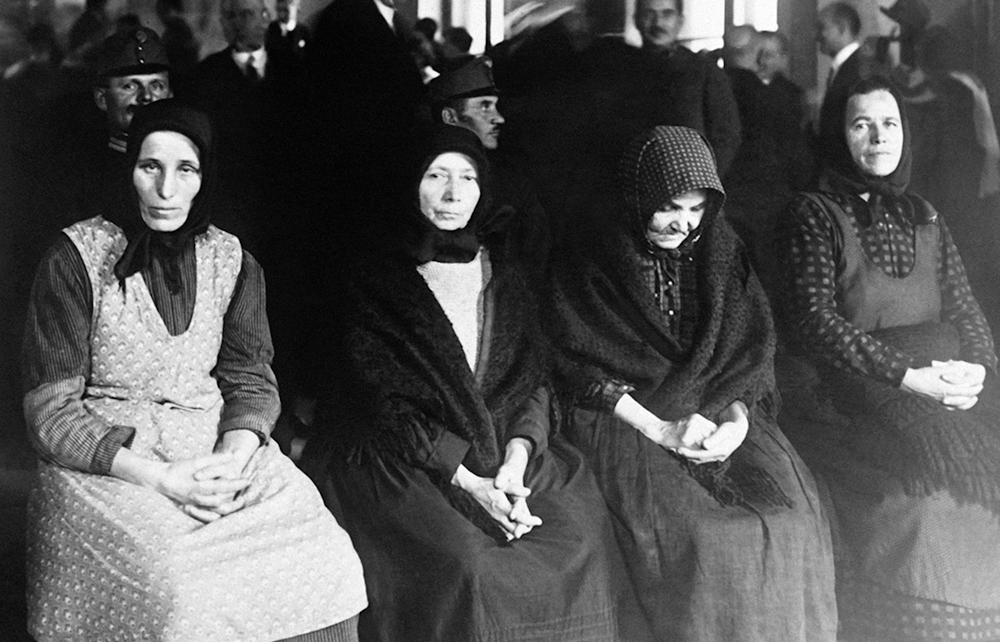There is a small town in Hungary called Nagyrév. With a population of 800, it seems unlikely to make the news. But a century ago it turned out to be the centre of a murder ring, and suddenly it became the focus of news-paper reports across the world. The unlikely setting made the story. It was a backwater, literally: the redirecting of the Tiszaltiver river decades earlier had cut Nagyrév off. Forget cars: this was a town where it was notable in the 1920s if someone owned a bicycle. Yet the place had the murder rate of a violent city.
By the time the authorities woke up to what was going on, they discovered dozens of homicides going back several years, and all traced to the town’s midwife, Suzannah Fazekas. The local doctor also served other surrounding villages and only held a clinic in Nagyrév once a week, which meant people turned to the midwife for daily medical assistance. Fazekas was appointed in 1911, and set about building alliances. She got her son a job at the post and telegraph office. She gave out free herbal remedies to the town’s principal figures. Known as ‘Aunt Suzy’, she was on hand to care for new mothers and help out tired farmers with their rheumatism.
Suzannah even boasted to the mayor that no doctor would be able to detect her poison
Meanwhile, she was also boiling down flypapers to extract arsenic, which she carried around in small bottles. This could easily be added to an adult’s goulash, or more often put into the mouth of a newborn with a finger. This brutal method of ‘family planning’ was hardly unknown in poor villages, but Aunt Suzy’s keenness was rare. It took a new doctor to spot the high number of ‘stillbirths’ in the town, which initially saw Fazekas charged with abortion. Bizarrely, she defended herself to the police by describing herself not a murderer but an ‘angel maker’. This was how she saw herself and what she did. She was helping women by getting rid of the problems in their lives, be it a violent husband or an extra tiny mouth to feed.
Against all the odds, she was acquitted of the charges – which only seems to have emboldened her. The murder method spread, as she recruited allies in nearby villages who also had annoying neighbours and in-laws they wanted to hustle to the grave. Aunt Suzy charged high fees for this secret potion, but also happily knocked off people who were in her way, with or without their families’ knowledge. A minor illness would linger, and a previously healthy person would take a fatal turn for the worse.
Patti McCracken tells this story in a novelistic style, creating a through narrative rather than a detached account. We see Aunt Suzy’s clothing, her aching back, her friends and children, and the crowd at the local inn. We are reminded of the diversity in the Austro-Hungarian empire, whereby even a small place like Nagyrév would have both Catholic and Protestant residents and appoint a Romany woman to be the town midwife. It’s atmospheric, and McCracken puts herself in the mind of the killers, not the victims.
The first world war and the chaos following it helped conceal these crimes. There was no judicial or political focus on the activities of remote peasant towns. Aunt Suzy counted on the fact that most bodies were not autopsied, or even seen by the local doctor. The town clerk signed off on a death certificate and the body went straight to the grave. But her audacity (she even boasted to the mayor of her poison that ‘no doctor could detect it’) was sailing incredibly close to the wind.
By the late 1920s the evidence was impossible to ignore and the justice system finally closed in, exhuming 162 bodies and testing for evidence of arsenic (Aunt Suzy was wrong about it being undetectable). More than 70 people would be indicted, and 18 were convicted.
To the outside world, this was one hell of a story. The 1920s were a bit of a decade for female crime, or at least sensationalised stories of women going off the rails. Ruth Snyder, the New York woman who murdered her husband, inspired reams of copy, and a front-page photo of her death in the electric chair. Maurine Dallas Watkins’s play Chicago (which inspired the later musical) brought to the stage murderous women, based on cases Watkins had covered as a journalist. And here, in some nowhere town in eastern Europe, was a whole gang of women dealing out death however they liked. When word of the angel makers got out, the newswires were buzzing.
Unanswered questions remain: who else might have been involved; and how plausible is it that so many didn’t know what was going on? The more disturbing thought is that Aunt Suzy, in her arsenic scheme, was not so original, and that her network was just the one to get caught.






Comments